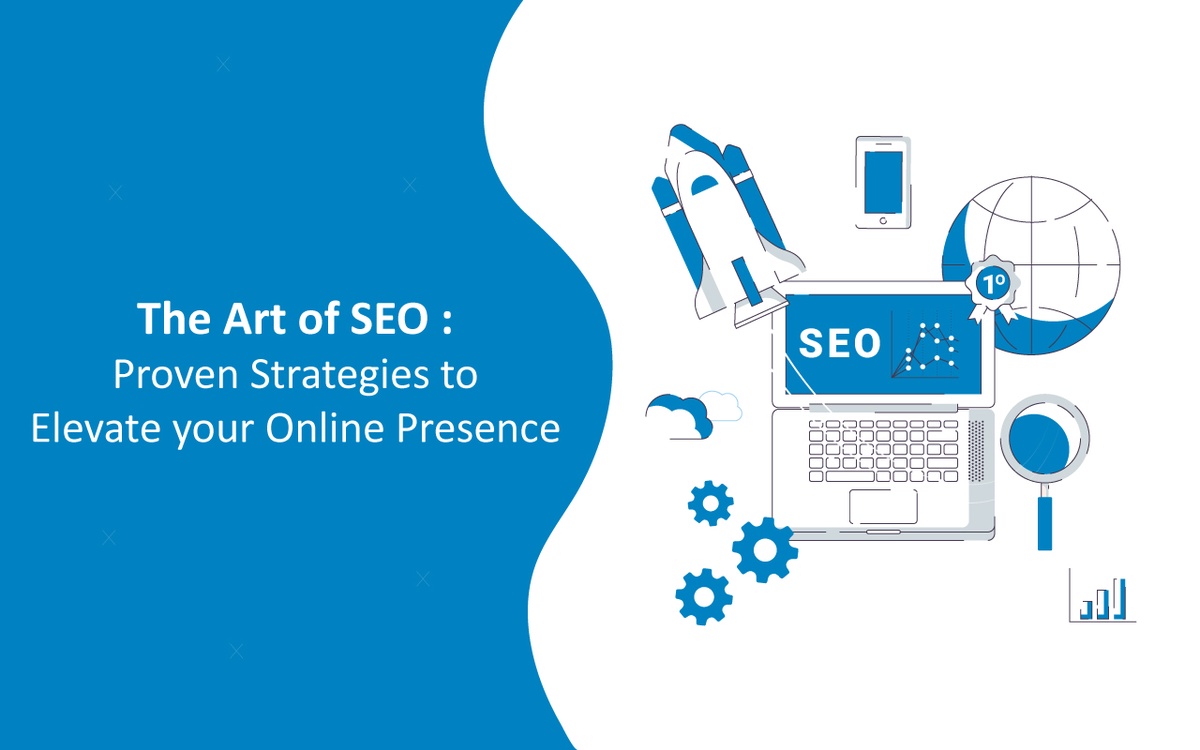Having a solid internet presence is crucial in the modern era for both organizations and individuals. It doesn’t matter if you’re running a personal blog or a multinational corporation; your success hinges on how well people can locate you online. Search engine optimization, or SEO, is where this all comes in.
SEO is not just a buzzword; it’s a game-changer that can significantly impact your visibility on search engines like Google. In fact, 70–80% of users ignore paid ads and focus solely on organic results, according to a study by ImFORZA. So, if you’re not optimizing your online content for search engines, you’re potentially missing out on a vast audience.
In this comprehensive guide, we’ll delve into the art of SEO, uncovering proven strategies that can elevate your online presence. We’ll explore the basics of SEO and effective tactics and provide real-world examples to illustrate their impact.
The power of SEO
Imagine the following: You just put up a website that looks great and shows off your goods or services. But despite your best efforts, your website is still hidden deep in search engine results, making it hard for potential customers to find it. SEO comes to the rescue at this point. It’s not magic. It’s a method for making sure that search engines like Google can easily find, index, and rank your online material.
Statistics:
- Over 90% of online experiences begin with a search engine. (Source: Moz)
- Google is responsible for 94% of organic search traffic. (Source: WebFX)
- 75% of users never scroll past the first page of search results. (Source: HubSpot)
Understanding SEO: The Basics
What is SEO?
SEO, or search engine optimization, is the practice of optimizing your online content so that search engines like Google can understand it better and rank it higher in relevant search results. The goal is to make your content more visible to people who are looking for information, products, or services related to your website.
Why is SEO important?
SEO is vital because it directly impacts your website’s visibility. Consider this statistic: 75% of users never scroll past the first page of search results (HubSpot). If your website doesn’t appear on that first page, you’re missing out on a significant portion of potential visitors and customers.
How do search engines work?
Search engines crawl, index, and rank web sites using algorithms that are hard to understand. These algorithms consider numerous factors when determining how to rank content. Some of the key factors include:
- Relevance: How well does your content match the user’s search query?
- Quality: Is your content informative and well-written?
- Authority: Does your website have a good reputation in your industry?
- User Experience: Is your website easy to navigate and mobile-friendly?
To succeed in SEO, you need to align your content and website with these factors to meet the expectations of search engines and users.
Key Elements of On-Page SEO
- Optimizing your website structure
SEO gives a lot of weight to how well-organized a website is. A well-organized site with clear navigation makes it easier for both users and search engines to find and understand your content. Here are some tips:
- Use descriptive and concise URLs.
- Make an XML sitemap to help search engines index your pages.
- Implement breadcrumb navigation for user-friendly browsing.
- Crafting compelling content
Content is king in the world of SEO. High-quality, valuable content not only attracts visitors but also encourages other websites to link to yours, improving your site’s authority. Consider these content tips:
- Keyword Research: Find the important keywords and phrases that the people you want to reach are looking for.
- Quality Over Quantity: Aim for content that is deep, well-researched, and has real worth.
- Engaging Multimedia: Incorporate images, videos, and infographics to enhance user engagement.
- Utilizing keywords effectively
Keywords are the words and phrases users type into search engines. Optimizing your content with the right keywords is crucial. However, it’s essential to strike a balance; overusing keywords can lead to keyword stuffing, which search engines penalize.
Instead, focus on:
- Keyword Placement: Include keywords in your titles, headings, and naturally throughout your content.
- Latent Semantic Indexing (LSI): Use related keywords to demonstrate topic relevance.
- Long-Tail Keywords: Target specific, less competitive keywords to attract more qualified traffic.
Off-Page SEO: Building Your Online Reputation
- Link-Building Strategies
Link building involves getting other reputable websites to link to your content. This not only drives traffic directly but also signals to search engines that your content is valuable. Here are some strategies:
- Guest Posting: Write high-quality guest posts for authoritative websites in your niche.
- Outreach: Reach out to relevant websites and request backlinks.
- Content Promotion: Share your content on social media and in relevant online communities.
- Social media’s role in SEO
Social signals, such as likes, shares, and comments on social media, can indirectly influence your SEO rankings. While social signals are not a direct ranking factor, they can enhance your online visibility and reach.
- Consistency: Maintain an active presence on social media platforms relevant to your audience.
- Engagement: Encourage user interaction with your content through likes, shares, and comments.
- Guest posting for authority
Guest posting not only helps with link building but also establishes you as an authority in your field. When you contribute valuable content to authoritative websites, you gain credibility. Make sure to:
- Choose reputable websites for guest posting.
- Provide informative and original content.
- Include a bio with a link back to your site.
Technical SEO: The Foundation of Success
- Site Speed and Mobile-Friendliness
Site speed and mobile friendliness are crucial for the user experience and SEO. Google considers these factors when ranking websites. You can improve site speed by:
- Compressing images and files.
- Minimizing HTTP requests
- Using a content delivery network (CDN).
Mobile friendliness can be achieved by adopting responsive web design, ensuring your website looks and functions well on various devices.
- URL structure and site maps
A clean and organized URL structure makes it easier for both users and search engines to understand your site’s hierarchy. Use descriptive URLs and create an XML sitemap to help search engines index your pages efficiently.
- Schema Markup for Enhanced Visibility
Schema markup, or structured data, provides additional information to search engines, allowing them to display rich snippets in search results. This can improve your click-through rate (CTR) and overall visibility.
Implement schema markup for:
- Reviews and ratings
- Product information.
- Events and schedules
Measuring Success with SEO Analytics
- Setting up Google Analytics
Google Analytics is a powerful tool that gives you information about how well your website is doing. Set it up to track important data like traffic sources, user behavior, and conversion rates. Review this data on a regular basis to find ways to improve.
- Tracking Keyword Rankings
Monitoring your keyword ranks is a must if you want to figure out how well your SEO is working. With tools like SEMrush and Moz, you can keep track of where your keywords rank over time. Change your strategy based on how you rank and how well your rivals do.
- Analyzing user behavior
Understanding how users interact with your website is key to optimizing for conversions. Analyze user behavior through tools like Google Analytics and heatmaps to identify areas where visitors drop off or encounter obstacles.
Staying updated with SEO trends
- Core Web Vitals and User Experience
In 2021, Google introduced Core Web Vitals as a ranking factor, focusing on user experience metrics like page speed, interactivity, and visual stability. Prioritize improving these aspects to meet Google’s standards and enhance user satisfaction.
- Voice Search Optimization
With the rise of voice-activated devices and virtual assistants, optimizing for voice search is crucial. Use natural language, provide concise answers to common questions, and consider creating FAQ pages to target voice search queries.
Summing Up
In the ever-evolving world of SEO, mastering the art of optimization is essential for elevating your online presence. By understanding the basics, implementing on-page and off-page strategies, addressing technical aspects, and staying updated with industry trends, you can position your website or content for success.
Remember, SEO is not a one-time effort but an ongoing journey. Continuously refine your tactics, adapt to algorithm updates, and monitor your analytics to achieve and maintain a strong online presence. With dedication and a strategic approach, you can rise through the ranks of search engine results and connect with your target audience effectively.


No comments yet